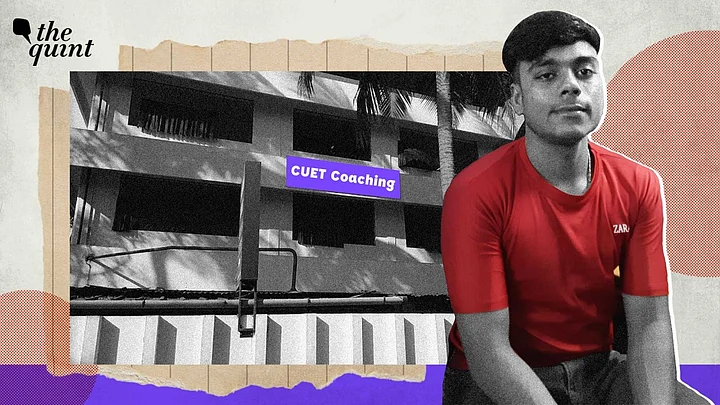In the run-up to the first-ever Common University Entrance Test (CUET) – a single entrance exam for undergraduate colleges – The Quint brings you stories of how students, as well as coaching centres, are adapting to the new pattern. In the third part, read about how students who cannot afford coaching classes and material, feel they are at a disadvantage. You can read part one here and part two here.
Every time, a student walked into the cybercafe in Delhi’s Munirka seeking help in filling the CUET form, 17-year-old Mohammad Masood would immediately assist.
For as long as the entrance test forms were available, he helped fill hundreds. What most students didn’t know, however, was that Masood – who is paid Rs 2,000 a month to work at the cybercafe – is also sitting for the CUET.
Munirka, where he works, is a hub of coaching institutes and paying guest accommodations. “A lot of these students are enrolled in these institutes that are teaching them how to attempt CUET. This is the first time this test is taking place. But I can’t afford the coaching classes. If I clear this test, I will be the first person in my family to go to college,” he told The Quint.
CUET crash courses -- that were designed by coaching institutes overnight after the test was made mandatory for students who want to gain admission in a central university – cost Rs 25,000 a month in the area.
The Quint spoke to several students on how lack of devices at home, and unaffordable coaching classes are putting them behind others who have access to it all.
“Relying on YouTube channels for help with CUET prep”
Masood gets a few hours in the morning before he begins work at the cybercafe, and a few hours after work to study for CUET. “I want to study B.Com (Honors) at the Delhi University, and get a stable banking job. For my board exams, my father enrolled me in coaching classes that cost us Rs 1,700 a month. Then this CUET announcement happened. Now I can’t afford these tuitions. They cost Rs 20,000 a month,” said Masood, whose father is employed as a security guard in Munirka.
Masood, who originally hails from Bihar’s Araria district, said that teachers at his school – the Sarvodaya Senior Secondary School in Munirka – didn’t help much as there was lack of clarity on what to expect in the test.
His friends have bought books that cost Rs 450 each to prep for the CUET, while he relies on two YouTube study channels. “I have found YouTube classes for all subjects except economics, and I am nervous about that,” he said.
“CUET payment didn’t go through”
For Manish Kumar Tiwari, 17, a resident of Delhi’s Kusumpur Pahari in Vasant Vihar, it’s been a tough few weeks. His payment for the CUET form didn’t go through, and the deadline ended on 26 June.
Even after the deadline, he showed up at a cybercafe with a relative, Dolly, 24, hoping to fill the form. “I don’t know what happened last time. We think that the payment did not go through. But now, there is no way to fix it as we have missed the deadline,” said Dolly.
This means that Manish might have to take a gap year. “There has been a lot of confusion since the CUET announcement. Initially, we were not sure of what to do. By the time we figured it out, it was too late,” said Manish, who wanted to study BA from the Delhi University.
“First online classes due to pandemic, now this additional exam”
For others like Gunjan Mandal, 17, it’s not just filling the form that was a task. She doesn’t know what to expect in the test. “I can’t take tuitions due to financial stress. My father works in a camera company and mother is a domestic help. They are busy themselves so I don’t know what to do with my doubts,” said Mandal.
Then there is 18-year-old Priya Jaiswal, who finished her schooling form a government school in east Delhi’s Mayur Vihar.
The pandemic-induced lockdown that led to online classes, and now the CUET have derailed her plans. She told The Quint,
First we had online classes for two years and we had to struggle with devices. Now, we have to prepare for an additional examination.Priya Jaiswal, student
Her friend is taking private coaching but for Jaiswal – whose father is an auto rickshaw driver and the sole breadwinner of the family – the cost is beyond reach. “All of us can’t spend Rs 20,000 on classes. Many of us are on the verge of giving up because we cannot compete with those from private schools who will be going to coaching classes,” she said.
(At The Quint, we question everything. Play an active role in shaping our journalism by becoming a member today.)
